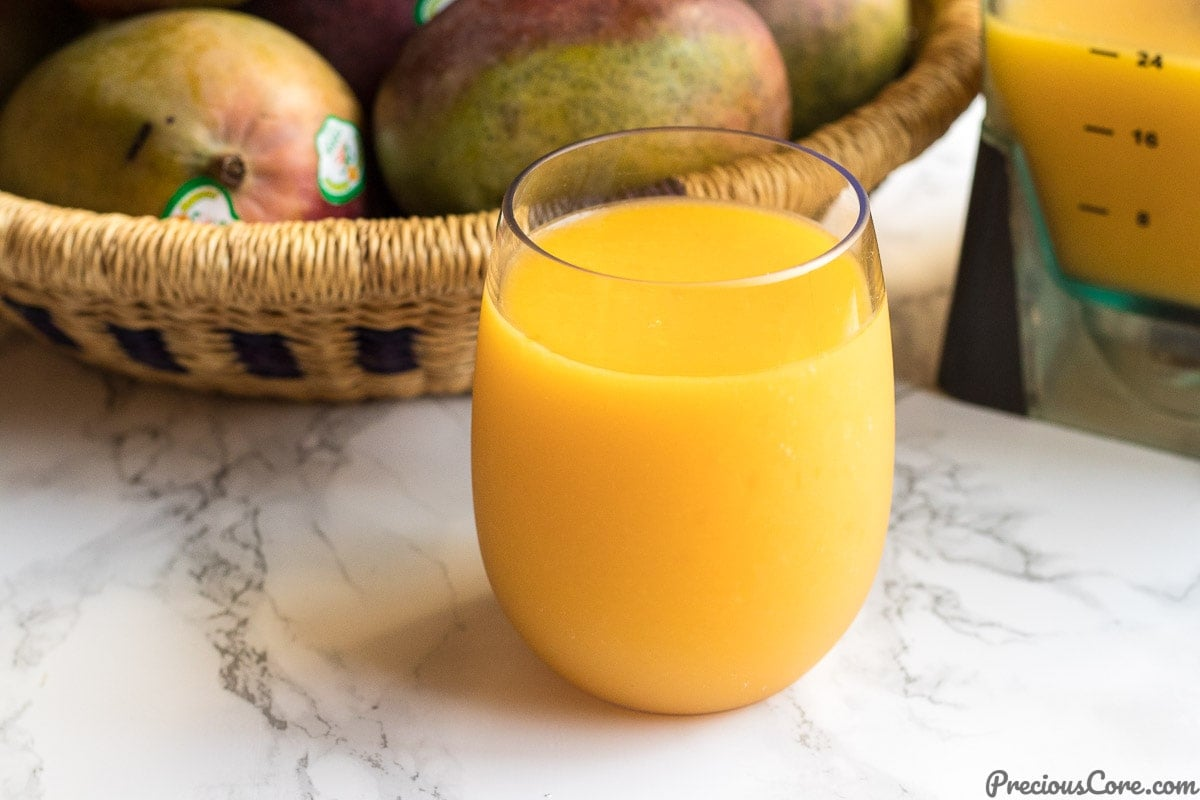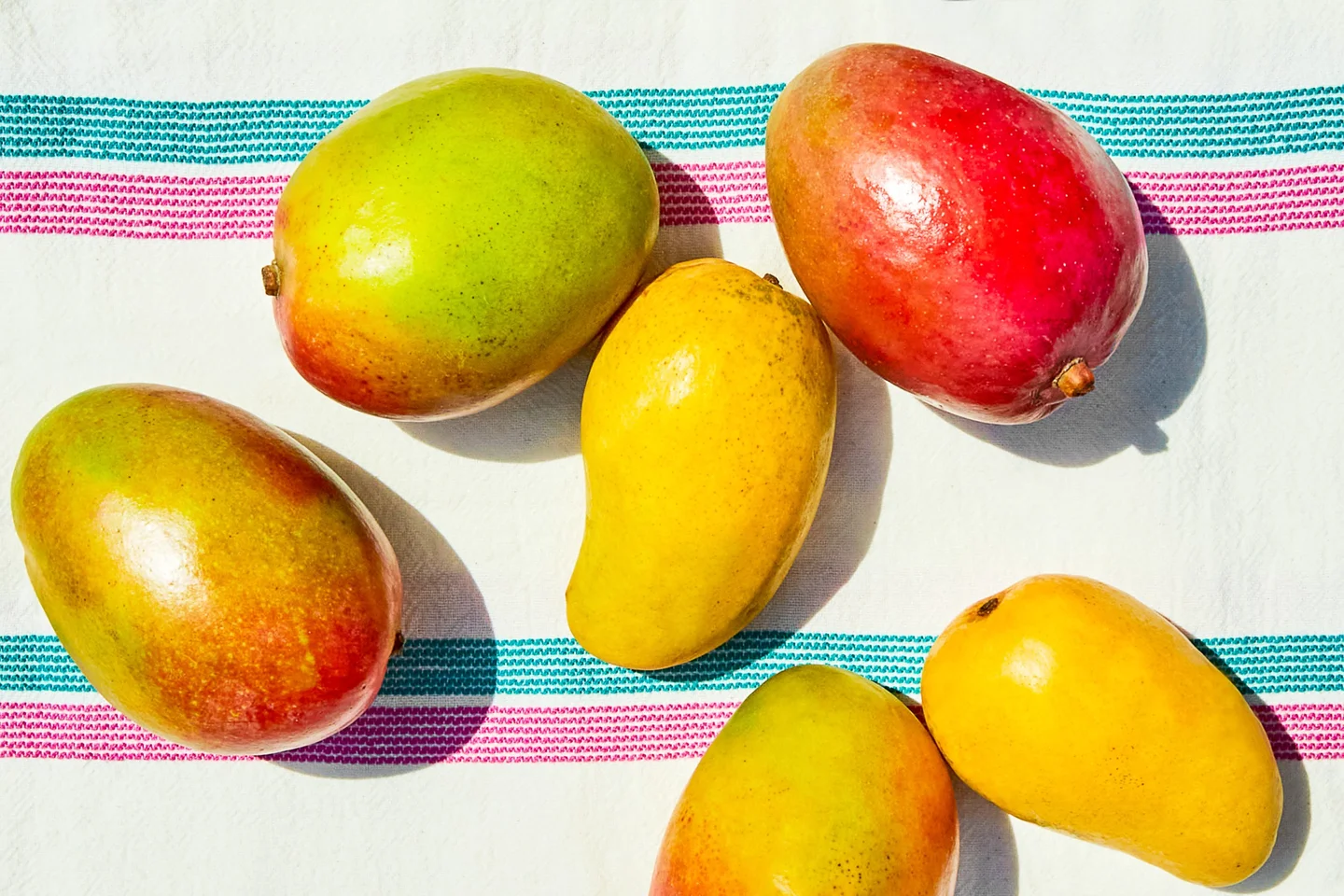Mango juice is a popular fruit juice that is often marketed as a healthy alternative to other juices. However, it contains high amounts of sugar and calories, which can be detrimental to your health.
It is made from the flesh and seed of the mango. It is also known as mango nectar or mango pulp. The fruit itself is a tropical tree native to India, Indonesia, Myanmar, and Malaysia that grows in moist areas like rainforests and riverbanks.
This has been shown to have many health benefits such as weight control, improved digestion and immunity. However, it also has some negative side effects like weight gain due to its high sugar content and increased risk for certain types of cancer because it contains high levels of carcinogens found in certain fruits like strawberries.

How to Make Mango Juice
1. Pick sweet mangoes that are fully ripe. Alphonso mangoes were used in this recipe. Semi-ripe mangoes can also be used. However, they will be naturally tart, so you will have to add more sweetener. Just make sure to wash them thoroughly.
2. Cut the mangoes into small pieces after peeling them. You may also cut them in half.
3. Mangoes should be cut into cubes by cutting through the inside flesh without piercing the skin.
4. The flesh is detached from the skin, and the cubes are scooped out using a slightly large spoon.
5. 2 or 3 tablespoons of sugar or honey should be added to a blender jar with them. Ginger and mint leaves may also be added if desired.
6. If you are using orange juice or coconut water, include some ice cubes or cold water. The amount of orange juice I used was 1 cup.
7. Smooth the mixture. You may need to add more liquid if you want it to be thinner. At this point, I added half another cup of water.
8. My serving glasses now include some soaked Sabja seeds.
9. Fill serving glasses with mango juice. It should have a pourable consistency but be thick.
10. However, the flavour will be diluted if you add more ice cubes.
Other Methods
Enjoy later by freezing now.
Simply use peeled mangoes to blend and strain mango puree all year round. Freeze the puree until it is firm. Once the puree is firm, transfer it to a sealable container or bag.
Mango juice is easily made by adding 4 to 5 mango cubes to a serving glass. You can then add simple syrup or sugar as necessary and top with some ice or water.
Adding a dash of lemon juice will help balance out too sweet mangoes. It actually tastes really good to drink sweet and tart juice together! Adding more mango cubes will make your juice more flavorful and diluted. All year long, the mango pulp can be frozen, and mango juice can be made at any time of year.
Using Fresh Mangoes
Mango juice can also be made from fresh mangoes. I think it makes it much more interesting to mix in some other ingredients besides mangoes.
When blended to juice, mangoes are pulpy and require more liquid. Pure water doesn’t add any flavour or nutrition to juice. When you take it out of its liquid container, it becomes a smoothie. To make it a smoothie, you’ll need a liquid.
In addition to adding more nutrition to your drink, coconut water, orange juice, or lemon juice will help you cool down and thin out your mango pulp. The taste of your mango juice will not be altered by the addition of these ingredients. You can pick which ingredients you want to use. Simply use water if none of these is available.
Conclusion: Is it okay to drink mango juice every day?

Mangoes are one of the most popular fruits in the world. They are known for their sweet taste and a variety of health benefits. However, some people think that mango juice is too acidic to be consumed every day without any limitations.
The answer to this question will vary depending on the individual’s health condition and response to acidity, but generally speaking, it is okay for most people to drink mango juice every day.
Frequently Asked Questions
What are the ingredients you should combine to make a good mango juice?
There are many ingredients that go into making a healthy and consistent product. It is important to have the right balance of these ingredients in order to make a product that is both healthy and consistent.
The first ingredient is the food itself, which should be made from natural ingredients. The second ingredient is the manufacturing process, which should be done with minimal chemicals and in an environmentally-friendly manner. The third ingredient is how it’s packaged, which should be done with minimal waste and in a way that minimises food waste.
The fourth ingredient is the shipping process, which should use sustainable transportation methods such as air freight or ocean freight. The fifth ingredient is how it’s marketed, which should focus on educating consumers about health benefits rather than focusing on taste or style.
What happens if you don’t filter your freshly made mango drink?
The digestive system is a complicated system that works in tandem with the nervous and endocrine systems. It’s made up of several organs and tissues, all with different functions.
The digestive system is one of the most important parts of your body that needs to be functioning properly for you to live a healthy life. If you don’t filter your freshly made mango drink, you could end up with some unwanted consequences like nausea, vomiting, stomach cramps, diarrhoea or constipation.
If it’s not filtered properly, it can also lead to an upset stomach or even food poisoning.
How much water do we need to make a glass of mango juice?
The amount of water required to make a glass of mango juice depends on the type of mango juice you are making. For example, a glass of orange juice requires about 3 cups of water, while a glass of grapefruit requires about 1.5 cups.
In terms of volume, it takes about 0.25 litres to make a cup worth of mango juice – and that is equivalent to around six tablespoons.





